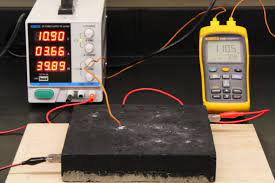
Breaking News
 Government shutdown triggers travel nightmare as controller shortages force ground stops...
Government shutdown triggers travel nightmare as controller shortages force ground stops...
 How a natural PEPTIDE helped me REGENERATE injured tissue
How a natural PEPTIDE helped me REGENERATE injured tissue
 Asteroid Threat Detection and Planetary Defense Can Be Complete and Ready by 2035
Asteroid Threat Detection and Planetary Defense Can Be Complete and Ready by 2035
Top Tech News
 Graphene Dream Becomes a Reality as Miracle Material Enters Production for Better Chips, Batteries
Graphene Dream Becomes a Reality as Miracle Material Enters Production for Better Chips, Batteries
 Virtual Fencing May Allow Thousands More Cattle to Be Ranched on Land Rather Than in Barns
Virtual Fencing May Allow Thousands More Cattle to Be Ranched on Land Rather Than in Barns
 Prominent Personalities Sign Letter Seeking Ban On 'Development Of Superintelligence'
Prominent Personalities Sign Letter Seeking Ban On 'Development Of Superintelligence'
 Why 'Mirror Life' Is Causing Some Genetic Scientists To Freak Out
Why 'Mirror Life' Is Causing Some Genetic Scientists To Freak Out
 Retina e-paper promises screens 'visually indistinguishable from reality'
Retina e-paper promises screens 'visually indistinguishable from reality'
 Scientists baffled as interstellar visitor appears to reverse thrust before vanishing behind the sun
Scientists baffled as interstellar visitor appears to reverse thrust before vanishing behind the sun
 Future of Satellite of Direct to Cellphone
Future of Satellite of Direct to Cellphone
 Amazon goes nuclear with new modular reactor plant
Amazon goes nuclear with new modular reactor plant
 China Is Making 800-Mile EV Batteries. Here's Why America Can't Have Them
China Is Making 800-Mile EV Batteries. Here's Why America Can't Have Them
Dash of nanocarbon black makes conductive, heat-generating concrete

Normally, concrete is an insulator against electricity, but recent research has focused on making it conductive. Adding some form of carbon to the mix usually does the trick, with past versions being tested in airport runways that automatically melt snow.
For the new study, researchers at MIT's Concrete Sustainability Hub (CSHub) and the French National Center for Scientific Research (CNRS) added nanocarbon black, which is a cheap carbon material that boasts excellent conductivity, to concrete. At just a four-percent volume, the concrete was able to carry an electrical current – and as a result, it gave off heat too.
"Joule heating (or resistive heating) is caused by interactions between the moving electrons and atoms in the conductor," says Nicolas Chanut, co-author of the study. "The accelerated electrons in the electric field exchange kinetic energy each time they collide with an atom, inducing vibration of the atoms in the lattice, which manifests as heat and a rise of temperature in the material."

 No Vacation For You!
No Vacation For You! China Innovates: Transforming Sand into Paper
China Innovates: Transforming Sand into Paper

